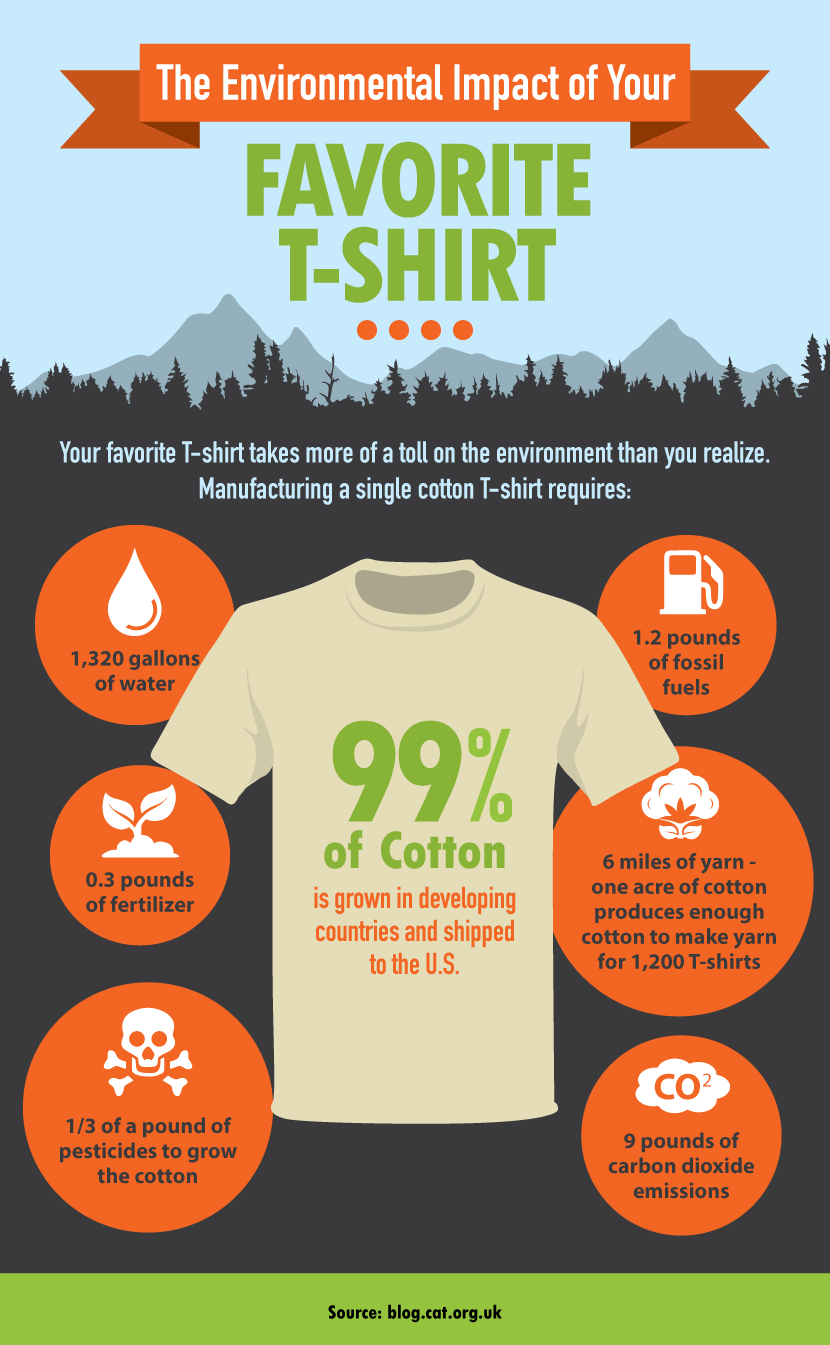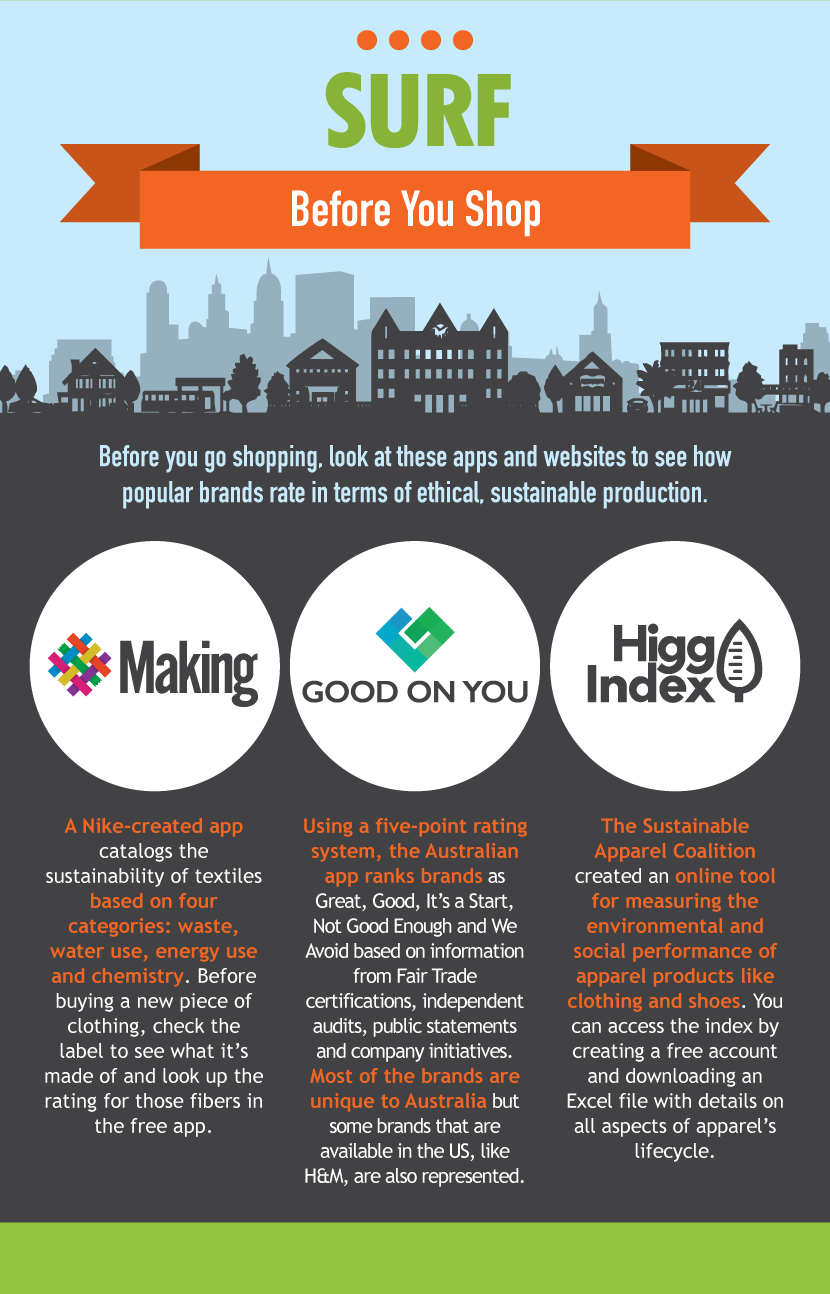Written by Jodi Helmer
When you reach into the closet and choose your clothes or scour the racks at your favorite retailer, the choices you make have an impact on the environment.
Jeans manufactured in the USA or made to fair trade standards, organic cotton T-shirts, and sweaters that can be washed in cold water and hung to dry are far gentler on the Earth than clothing manufactured in sweatshops overseas from chemical-laden fabrics.
Opting for a “green” wardrobe means paying close attention to fabrics, countries of origin, and laundering requirements, and considering how to dispose of clothes that are torn or no longer trendy.
The decision to emphasize environmental sustainability in your wardrobe is easier than ever. Here are some tips to get started.
Choose eco-friendly fabrics: A quick look at clothing labels offers a lot of information about the fabrics used to manufacture a piece of clothing.
Common sustainable fabrics include hemp and bamboo. Both are fast-growing and rapidly renewable. Soy textiles are made from the by-products from the manufacturing of tofu and soybean oil. The waste product produces textiles that are soft and drape like silk.
When it comes to eco-friendly fabrics, clothing made from organic cotton is probably the most popular option.
Manufacturing conventional cotton is a chemically intense process. It takes about one-third of a pound of chemicals to manufacture enough cotton for a single T-shirt. Most of the chemical fertilizers used to grow cotton are known carcinogens.
Although it’s easier than ever to find organic textiles, it’s important to know that United States Department of Agriculture organic standards don’t apply to clothing. Even if the main fabric used to manufacture a piece of clothing was certified organic, the finishing of the fabric or the fibers it was blended with might have been processed with chemicals.
Some companies, including Patagonia, are making textiles from recycled plastic water bottles. Their eco-friendly polyester is used in everything from jackets and fleece pants to board shorts. When the clothing wears out, the company will take it back and reuse it to make new pieces.
Shop second-hand: Vintage boutiques, consignment stores, and thrift shops are great alternatives to purchasing new clothes.
Many resale shops are set up like fashion boutiques, selling trendy clothes at a fraction of the cost of traditional retailers. The National Association of Retail Professionals estimates that resale shops generate $17 billion in annual sales thanks to consumers concerned about cost.
Sourcing fashionable finds at a fraction of the cost is just one of the reasons shoppers scour the racks at second-hand shops. Resale shoppers are also concerned about the environment.
The average American sends 70 pounds of clothing and other textiles to the landfill each year. Donating items to resale shops – or purchasing gently used clothing – helps keep it out of the landfill.
Wash carefully: The average American family washes 300 loads of laundry every year, using more than 9,700 gallons of water, 1,990 kWh of electricity, and producing one metric ton of CO2 emissions, according to the Duke University Center for Sustainability and Commerce.
A significant amount of the energy used to do laundry is used to heat the water and run the dryer. Using cold water and hanging clothes to dry significantly lessens your environmental impact – similar to taking 23 coal plants off the grid, according to Duke University.
Taking proper care of fabrics will also extend the life of your clothes.
Washing denim in cold water with minimal detergent on the gentle cycle is not only better for the environment – it also helps preserve the color and shape of your favorite jeans.
Cotton should be washed in warm water and hung to dry to prevent clothes from shrinking; wool clothing, which should be hand-washed, shouldn’t be put in the dryer for the same reason. (Bonus: No dryer means less energy use!)
For delicate fabrics that can’t be tossed in the washing machine, look for dry cleaners that don’t use perchloroethylene, or PERC, a chemical that the U.S. Environmental Protection Agency calls a hazardous air pollutant and possible human carcinogen. The website NoDryClean has a searchable database of dry cleaners that do not use PERC.
Research brands: Find out which brands are manufactured with environmental and labor standards in mind.
Before you hit the mall, go online. The Sustainable Apparel Coalition website lists brands, retailers, and manufacturers committed to minimizing their environmental impact. See if your favorite brands are members.
Manufacturers that are committed to minimizing their environmental impact will tout their practices on their websites. Nike has a page on its site devoted to its practices in sustainable innovation and Levi Strauss highlights its environmental accomplishments on its site, including sourcing cotton for its iconic blue jeans from cotton growers committed to decreasing the ecological impact of production.
Discard with care: Think twice before sending ill-fitting jeans and wedge-heeled booties from two seasons ago into the trash. Clothes that no longer fit or are no longer on trend might be perfect for someone else.
Invite friends over for a clothing swap or send unwanted items in good condition to charities like Goodwill or Dress for Success. Even old prom dresses can find new life in a dress-up box for a pint-size princess-in-training.
Some clothes are not worthy of the donation bin. No resale shop will want to resell your stained, soiled, or ripped clothing. Instead of tossing unwearable items into the trash, get creative. A cozy sweater can be upcycled into a pillow cover; worn out jeans can be woven into a rag rug; favorite T-shirts can be turned into a memory quilt. You’ll have a new piece and keep clothing from the landfill.
Your choice to seek out eco-friendly textiles and make smart decisions about which brands to support and how to dispose of unwanted clothes is a simple way to wear your commitment to the environment on your sleeve.
Source: Fix.com Blog
 Pride News Canada's Leader In African Canadian & Caribbean News, Views & Lifestyle
Pride News Canada's Leader In African Canadian & Caribbean News, Views & Lifestyle








